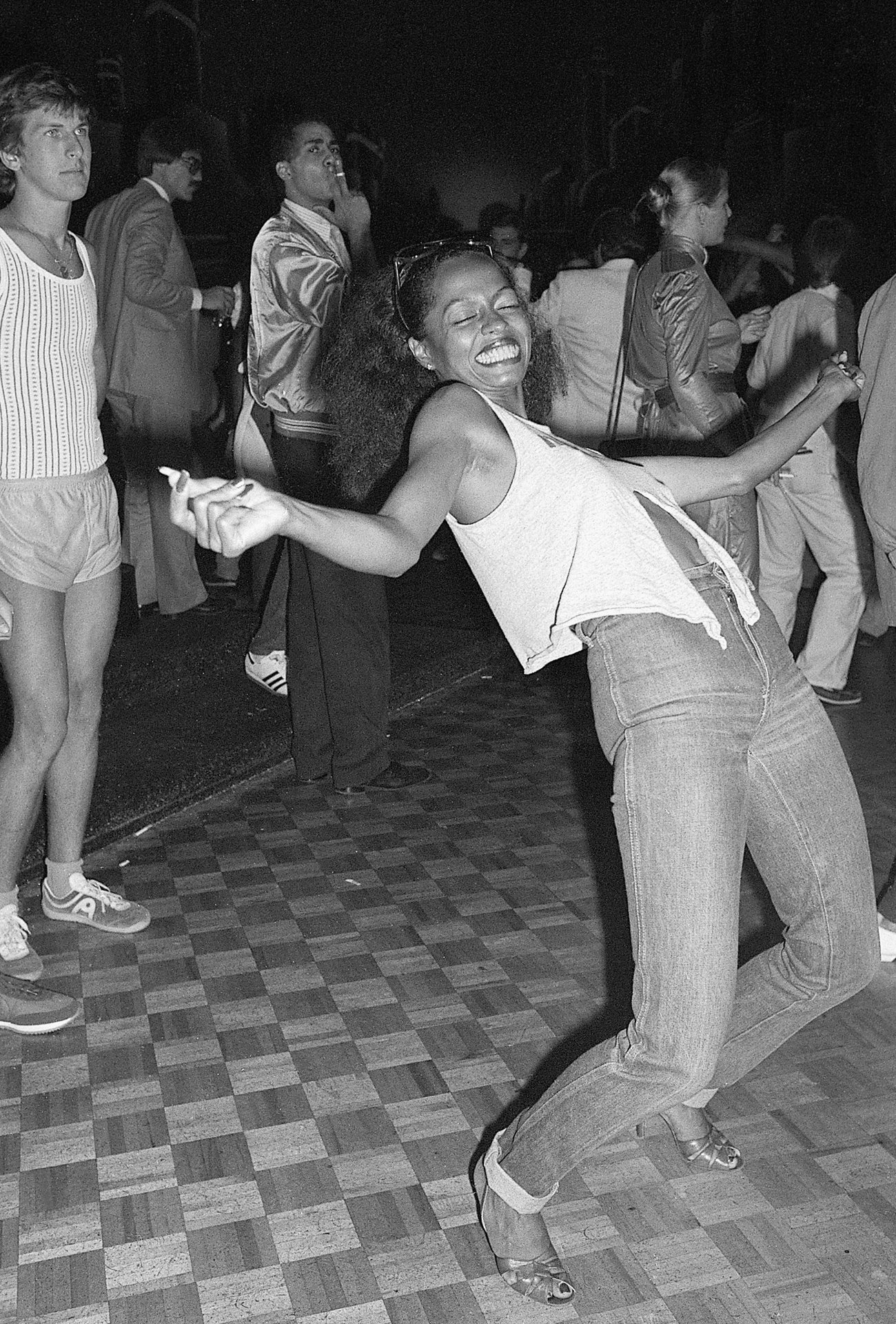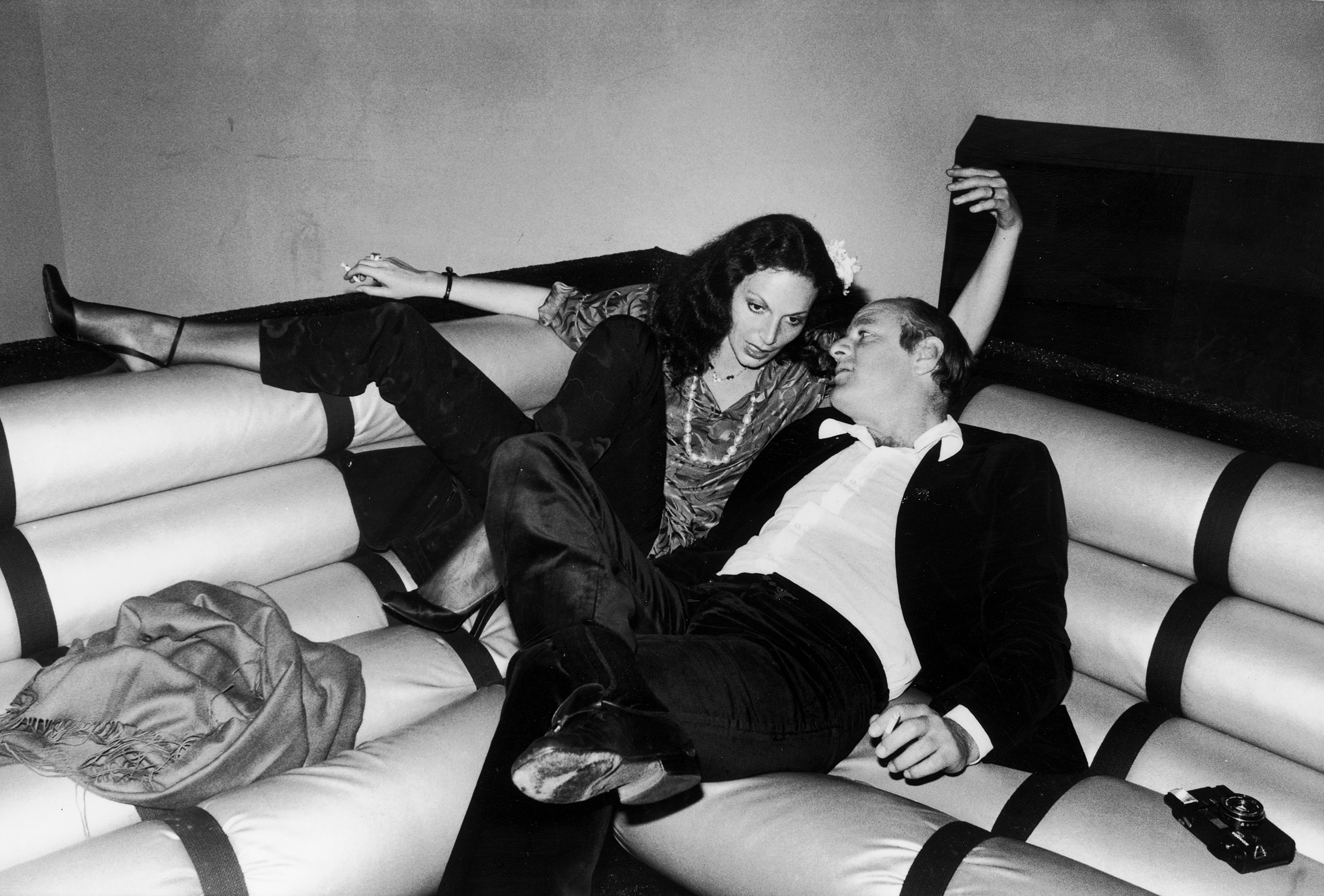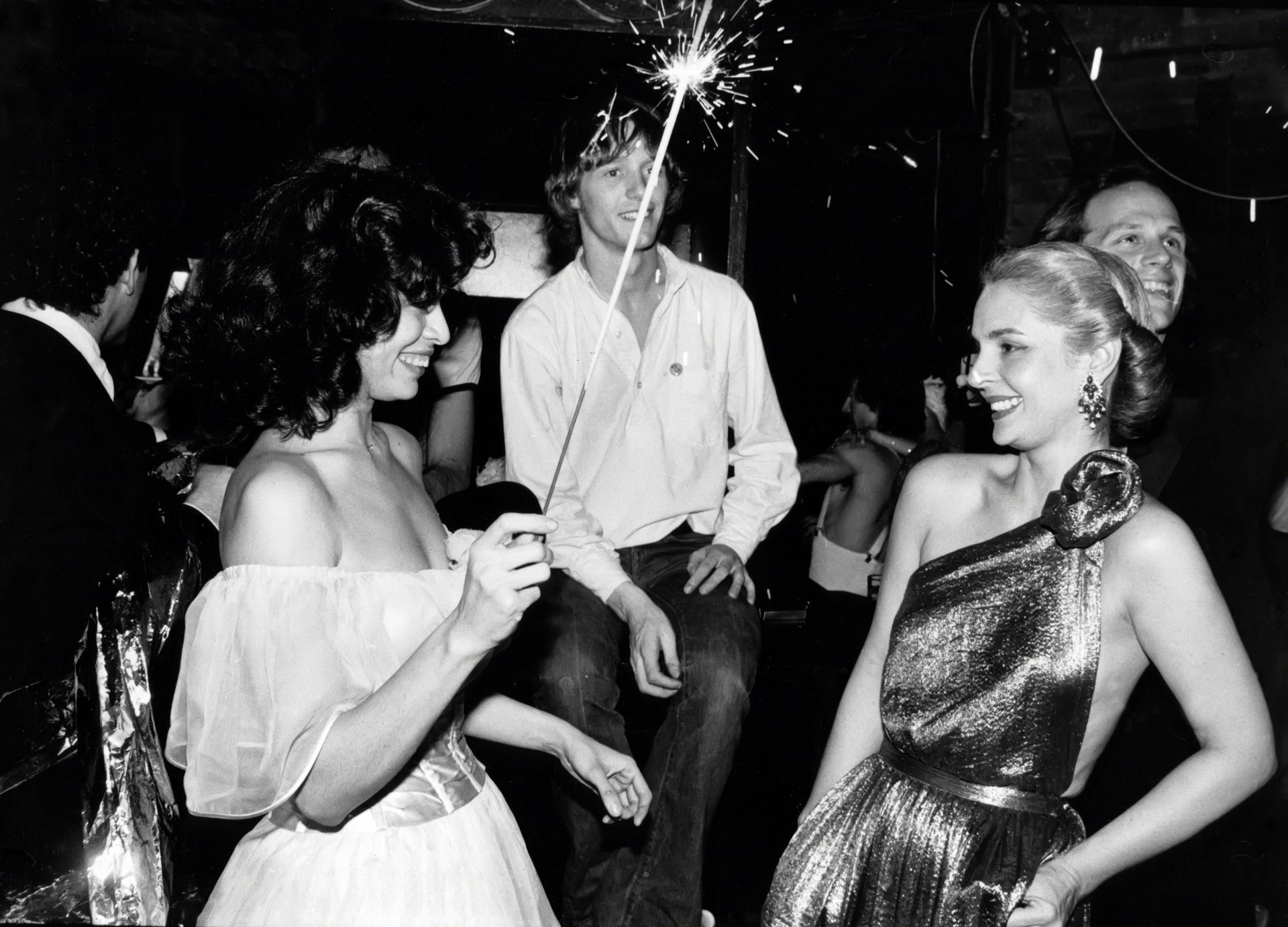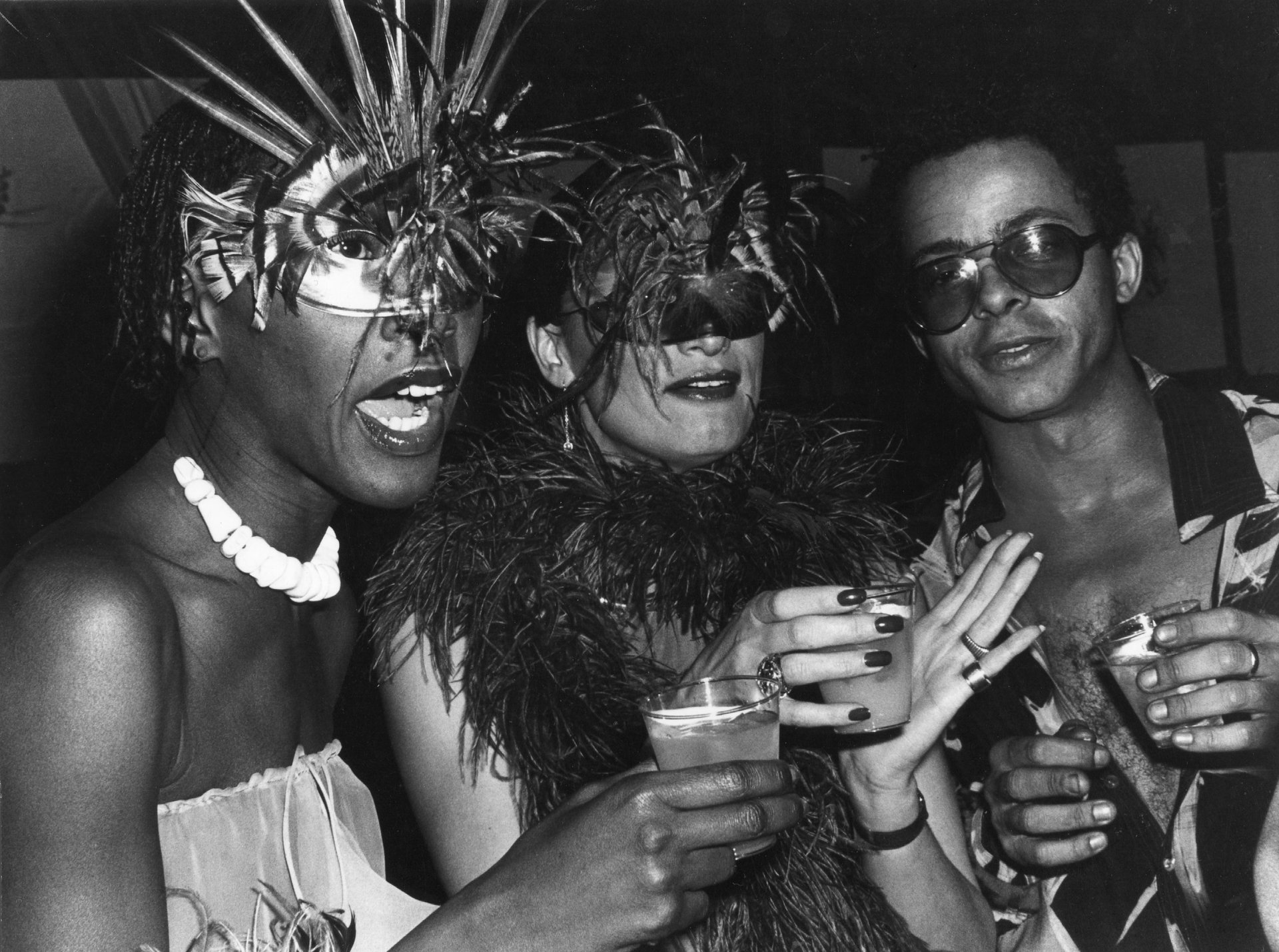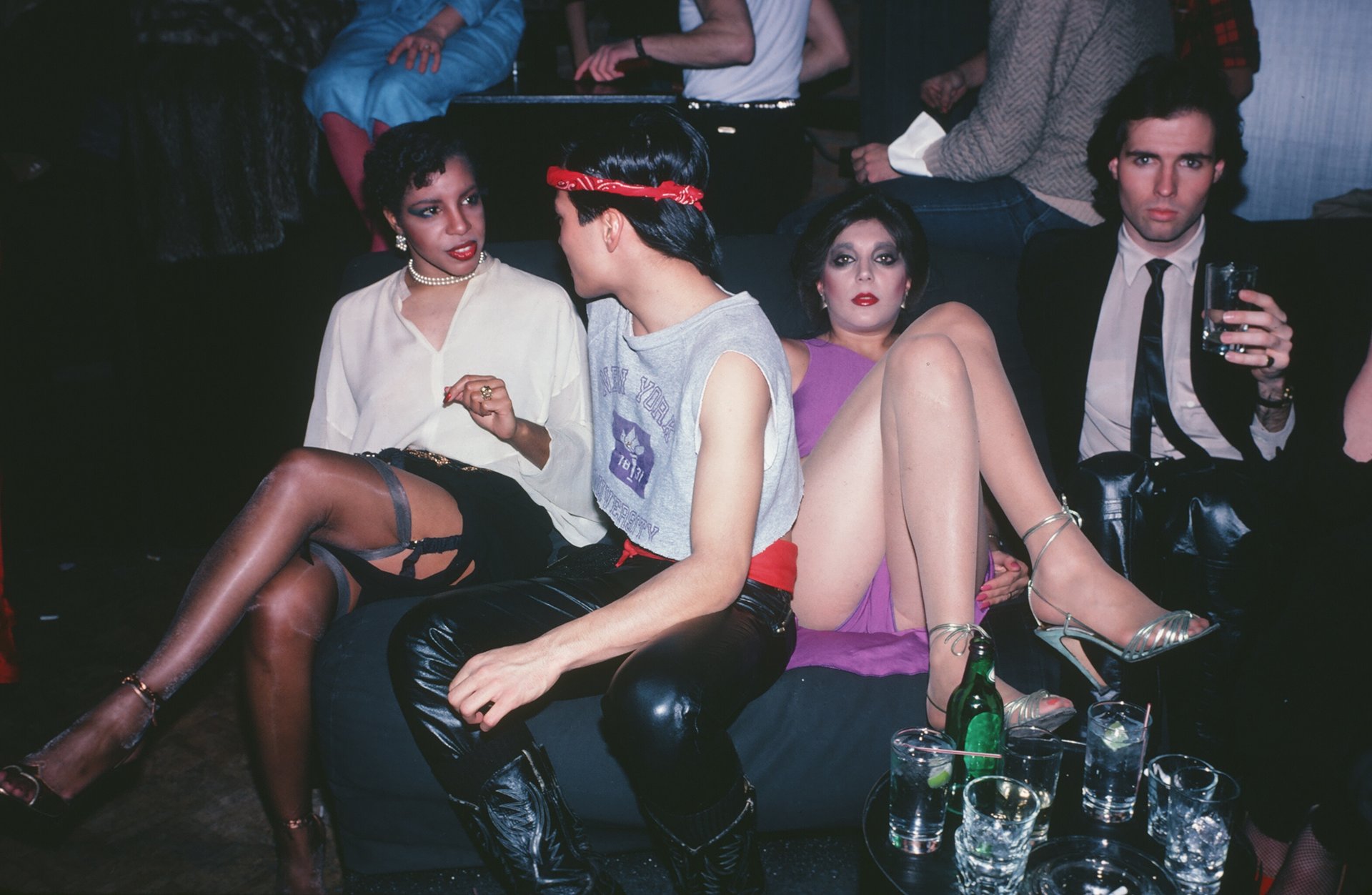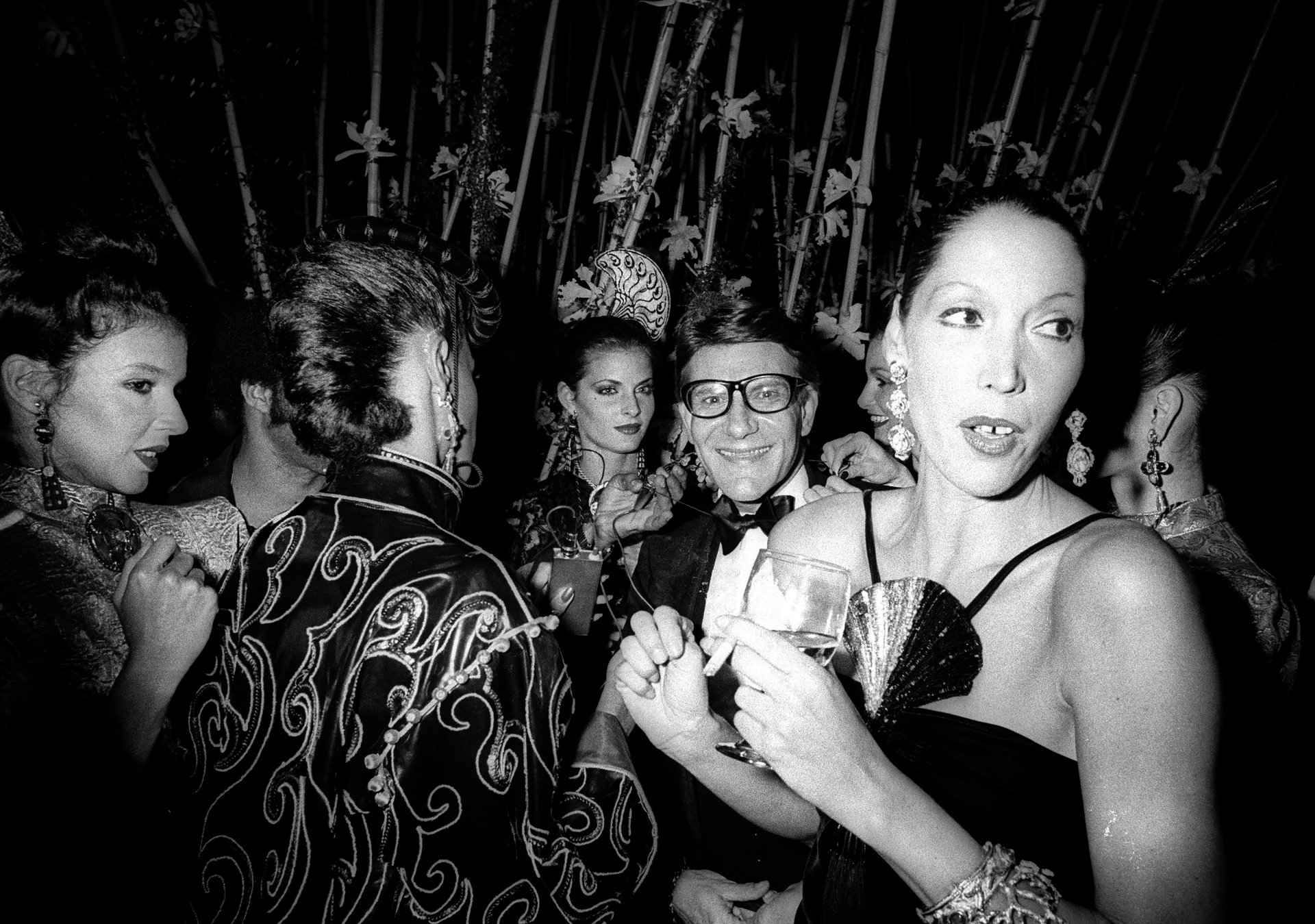“He said they were having a party and ‘Grace Jones is going to be the surprise guest and we want you to do the costumes.’ I said, yes. But, I didn’t go to the party.
That produced the iconic photos of Jones in the gold lame bodysuit. (Ok, yes, all Grace Jones photographs are iconic).
For Kamali and the favored designers of the moment, Studio 54 was a runway for their creations to reach the public’s eyes. “I was doing Lycra, shine, body suits – clothes that people could dance in,” said Kamali. “A lot of people were wearing my clothes.”
Her sleeping bag coats had their first go-round with fame, when the doormen who had to stand outside by the velvet ropes for hours in the cold, exercising the infamous Studio 54 snobbery policy, started wearing them to keep warm.
About 50 percent of Kamali’s customers at the time were men. “We now call it gender fluid,” said the designer. Jagger and the New York Dolls would come in and buy. “It didn’t look like they were trying to look feminine,” said Kamali. “It was about how they felt. That was the beginning of when people dressed for what they were feeling.”
‘It was sexy clothes,” recalled Burrows. “Sexy, sexy. It was all about sex.”
He too was dressing Mr. Sexy himself, Jagger. “I used to use Jerry Hall,” explained Burrows, “and she suggested to Mick that he come to me. I got to do some tie-dye tops for him.”
Models loved donning Burrows’ clothes in body-revealing jersey, plunging necklines, and bright colors, in the hopes of getting past the dreaded ropes. “Sometimes I didn’t know where they got them from,” said Burrows. He doubted they could afford his dresses which sold at high-end Henri Bendel for $350-450 each (in Seventies dollars). “I was having $10,000 sales days at Bendel. They probably borrowed them from rich women.”
Studio 54 and the fashion era that it represented ended abruptly. The owners were charged with tax evasion. The club closed. The party moved on. And so did fashion.
Kamali was already looking toward collections that were all-matte, all-gray. A 180-degree turn. “When Studio closed, I was doing all these sparkly things,” she said. “Then all the color, all the shine, all the nighttime ended for me. I just went way over on the other side. From dressing for night to dressing for lifestyle.”
And that’s when her sweatshirt collection was born – a seminal moment in 1980s fashion.
